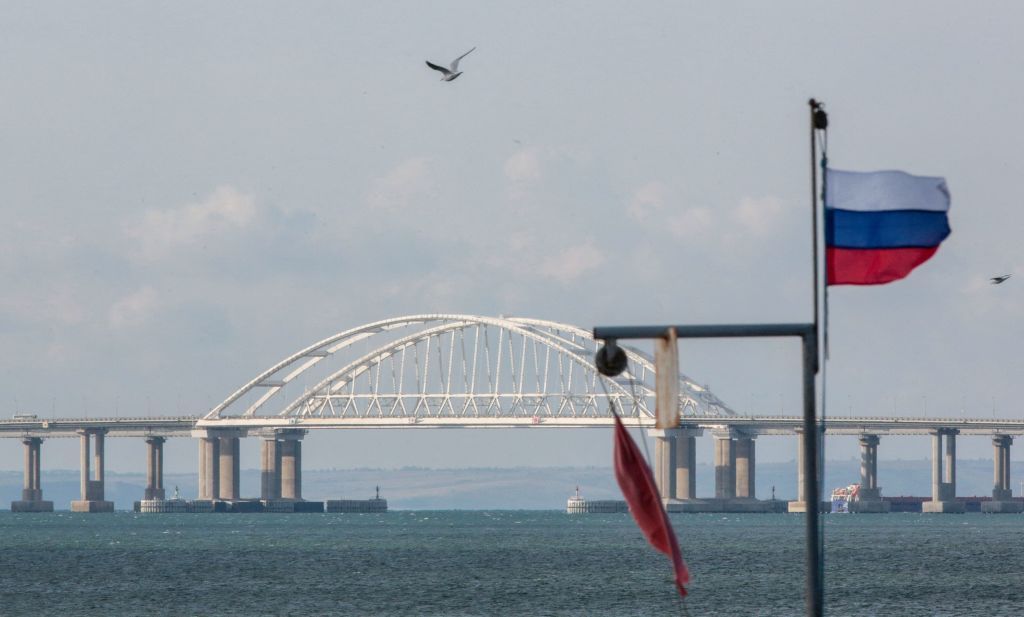A missile attack on occupied Crimea on May 15 caused explosions and fires in the city of Sevastopol, as reported by occupation authorities and Russian media outlets. The Russian-installed head of Sevastopol claimed that Russian air defense units successfully repelled the attack, with intercepted missile debris hitting private businesses. Despite the destruction, no casualties have been reported. The Belbek military airfield also saw fires burning nearby, with authorities closing traffic on the Crimean Bridge during the attack. This incident is part of a series of increased attacks by Ukrainian forces on occupied Crimea, which have targeted Russian military assets in recent months.
Russian media sources have indicated that Russia is no longer using the Crimean Bridge, also known as the Kerch Bridge, as a supply route for the front lines in Ukraine. The bridge, which connects the Russian mainland with the Russian-occupied Crimea peninsula, has historically been a crucial link for Russian military operations in the region. However, with the bridge no longer being utilized for this purpose, it suggests a shift in logistics and supply strategies by Russian forces in response to ongoing conflicts. This development could have significant implications for the dynamics of the conflict in Ukraine and the broader region.
The missile attack on occupied Crimea, along with the reported changes in supply routes, highlight the ongoing tensions and violence in the region. The conflict between Ukraine and Russia, which began with Russia’s annexation of Crimea in 2014, has continued to escalate, with both sides engaging in military actions and territorial disputes. The increasing frequency of attacks by Ukrainian forces on Russian military assets in Crimea indicates a willingness to challenge Russian control and assert Ukrainian sovereignty over the region. These actions have the potential to further destabilize the already volatile situation in Crimea.
The use of long-range cruise missiles by Ukrainian forces in previous attacks on the Belbek airfield demonstrates a sophisticated and strategic approach to targeting Russian military assets. The damage inflicted on Russian military aircraft in these attacks underscores Ukraine’s capabilities in conducting precision strikes on key installations in occupied Crimea. As Ukraine continues to intensify its military activities in the region, it is likely to face retaliation from Russian forces, potentially leading to further escalation and violence. The missile attack on Sevastopol and the ongoing conflict in Crimea underscore the complex geopolitical dynamics at play in the region.
The situation in Crimea and the broader conflict between Ukraine and Russia highlight the challenges faced by independent journalists reporting on the ground. In a landscape characterized by censorship and propaganda, supporting independent journalism is crucial for uncovering the truth and holding those in power accountable. By joining the fight to support independent journalism in Ukraine, individuals can contribute to a more transparent and informed understanding of the events unfolding in the region. As tensions continue to rise and violence escalates, the role of independent journalists in providing accurate and unbiased information becomes increasingly vital in shaping public perception and influencing decision-making at a global level.
Overall, the missile attack on Sevastopol, the reported changes in supply routes via the Crimean Bridge, and the broader conflict between Ukraine and Russia underscore the ongoing tensions and violence in the region. As both sides engage in military actions and territorial disputes, the role of independent journalism in uncovering the truth and providing accurate information becomes paramount. By supporting independent journalism in Ukraine, individuals can contribute to a more transparent and informed understanding of the complex geopolitical dynamics at play, ultimately shaping public perception and influencing decision-making on a global scale.


